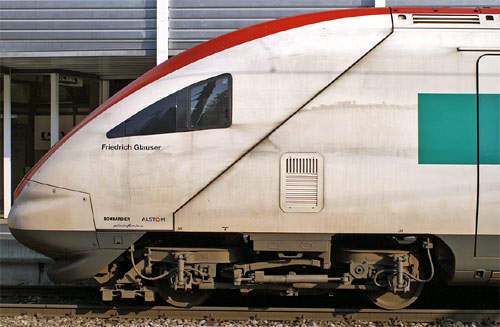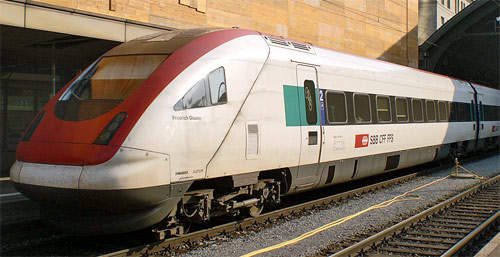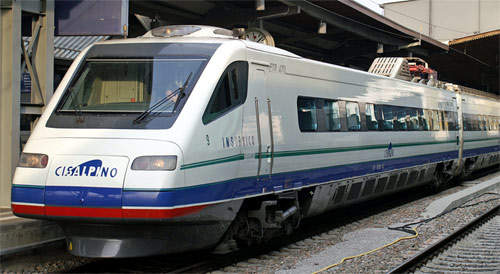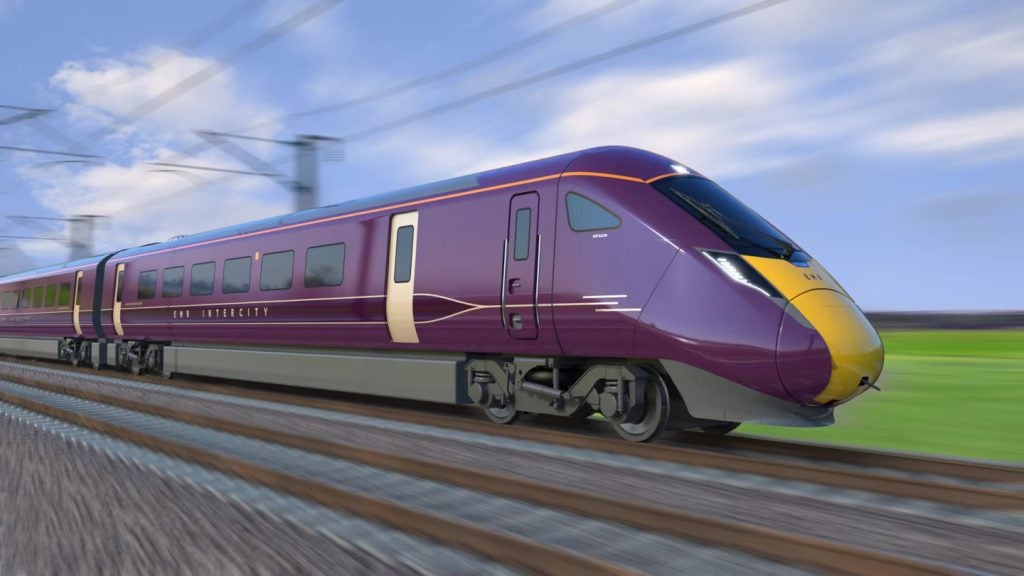SBB/CFF/FFS, the operator of Switzerland’s rail network has implemented major improvements in the services it offers to its rapidly-growing passenger base, centred on a 44-strong fleet of RABDe 500 tilting trains.
Many services are being increased in frequency to half-hourly, as a result of infrastructure improvements, and have benefited from the introduction of these trains, which were supplied by a consortium of major manufacturers comprising Alstom, Adtranz (now Bombardier), Fiat-SIG and Schindler Waggon. The trains are known as InterCity ICN (Intercity-Neigezug) or InterCity tilting train, and ten more were later ordered.
The project
Swiss rail passengers have increasingly been demanding better levels of comfort and more attractive timings for their train services. As a result, Swiss Federal Railways decided to undertake a co-ordinated modernisation programme, to be introduced in a ‘big bang’ approach, rather than a piecemeal programme, in an effort to ensure that standards are lifted uniformly across the whole network.
SBB drew up a series of timetable requirements, and then set out a performance specification for its new trains, covering the number of seats, vehicle layout and the required power ratings, among other criteria.
Test running of Swedish X2000 and Italian ‘Pendolino’ high-speed trains on Swiss tracks gained interest in high-speed technology in the country, but those aspirations were frustrated when SBB halted the project in autumn 1995. A second attempt to get the project off the ground proved more successful.
Rolling stock
Although the track forces exerting by tilting trains on existing rails are greater than conventionally-bogied rolling stock, this was the preferred option for use on the twisting, undulating terrain of the Swiss rail system.
The chosen rolling stock design is a sleek, streamlined seven-car EMU, with a seating capacity of 480 and a top design speed of 200km/h (125mph). Styling is by Italian design house Pininfarina.
Each trainset weighs 355t and is 188.8m-long. Power is supplied at 15kV AC, with the transformer accommodated in the third vehicle. Vehicles are all powered except first class and the restaurant car.
Monocoque aluminium bodies are used to minimise weight, and the vehicles’ dimensions are carefully designed to ensure there is no resonance with the running gear and underfloor-mounted equipment, ensuring a smooth ride.
Each vehicle is mounted on an H-frame bogie, which incorporates the electrically driven tilting mechanism, centrally-located secondary suspension, and radially-steered wheelsets. The transformer in each three-car section feeds a GTO converter, powering four self-ventilated traction motors.
Power for auxiliary and passenger accommodation is supplied at 1.4kV 50Hz from an inverter in the train’s traction converter. Data between the two halves of each trainset is transferred via a wired train bus, using a system based on that used in the IC-2000 double-deck inter-city rolling stock.
The tilting equipment specification has very tight parameters. The leading cab has a processor which calculates the degree of tilt needed as the train enters each curve. The interior design incorporates novel features. There are no car-end doors between passenger seating areas and the gangways, which are pressure-sealed. The first-class seating is located in the centre of the train, and a 26-seat dining car in the second class area.
Despite a lengthy development period and initial teething troubles, ICN had settled into regular service by 2001. In spite of the shorter journey times, ICN services are integrated with other SBB services and carry no fare premium.
Infrastructure
Many of Switzerland’s notoriously twisty, mountainous main lines have been upgraded and modernised in recent years. This has included the Simplon main line, on which the pre-production version of the new trains underwent initial testing at up to 220km/h (135mph). The results were fed back to Adtranz and compared with performance on the company’s rolling test rig at its Munich-Freimann factory.
While high cornering speeds were demanded by the developers, they stipulated that passengers must not be subjected to any undue lateral or vertical forces. The ‘Pied du Jura’ main line between Geneva, Lausanne and Biel underwent considerable work before tilting trains were introduced.
Track between Neuchatel and Biel doubled in anticipation of a peak in demand between the two cities in 2001, when three towns on the route staged the ‘Expo 02’ exhibition.
Introduced on the Geneva-Neuchatel-Zurich-St Gallen route, ICN sets run in pairs as 14-car trains, providing a half-hourly service between Geneva and Zurich. ICN’s tilt capability, higher top speed and line improvements allow the trains to cover the Lausanne-Zurich leg in the same amount of time as locomotive-hauled trains taking the considerably shorter route via Bern.
Maintained at a dedicated depot in Geneva, ICN sets operate these routes:
- Geneva Airport–Biel/Bienne-Zürich-St Gallen
- Lausanne–Biel/Bienne-Zürich-St Gallen
- Geneva Airport-Biel/Bienne-Delémont-Basel SBB
- Lausanne-Biel/Bienne-Delémont–Basel SBB
- Biel/Bienne-Olten-Zürich-Konstanz/Romanshorn
ICN are not the only tilting trains operating in Switzerland, with Cisalpino services operated by dedicated tilting stock.
Signalling and communications
Signalling systems on the routes are basically unchanged over many years with the trains governed by an absolute block system and running under multiple (three or four) aspect colour signalling.
A pilot ETCS train control system was installed on the Olten-Luzern route, then on several major new lines planned for the country, such as that from Mattstetten to Rothrist.
This new line, passed for 230km/h will allow SBB to cut journey times and increase capacity on one of its busiest routes. If successful, this is likely to be extended across the network, in a project which will take several years to complete.
The future
SBB has committed itself to major efficiency improvements over the system. This includes half-hourly services in each direction on all significant routes. Major infrastructure upgrades such as the Gotthard and Lotschberg base tunnels will allow ICN to run at higher speeds, although will not make as much use of the tilt system.




















